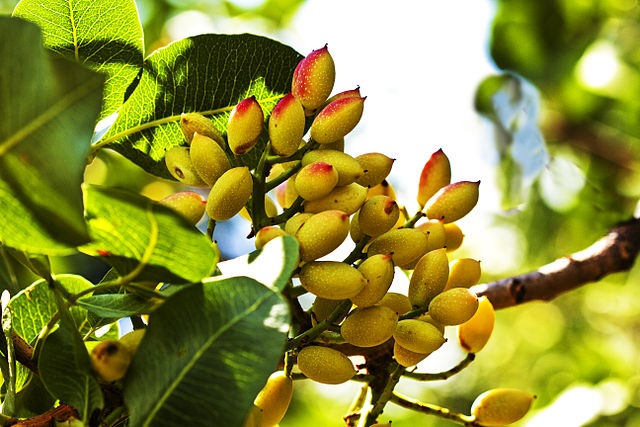



In Australia, there is a single organisation, namely: Pistachio Growers’ Association Inc (PGAI). Even though there are no official state or regional organisations, the Western Australia producers are prone to discussing their game plan due to geographic reasons. Furthermore, the PGA is an active member of the Australian Nut Industry Council (ANIC). They also have an e-newsletter that keeps growers informed of developments with the research projects and other industry news and professionally prepared Technical notes.
In 2014 the Pistachio Information and Technology Groups, PIT Groups were established through PGAI and HIAL via grower levies and meet 3 to 4 times a year to listen to and discuss relevant presentations on production, pests and diseases, harvest management and many other topics. The PGA website provides growers with links to Californian and Australian research.
According to the latest reports, there are a total of around 40 pistachio growers. In fact, the total area that is planted currently is over 750 hectares. Generally, those orchards that have survived the pistachio learning curve and long juvenile phase are producing well. The climate and soils have proven satisfactory for pistachio production.
There are five large pistachio orchards and another five orchards of 10-15 hectares – the size required to make a living solely from pistachios. Around 20 mixed fruit growers, each produces less than 5 tonnes of pistachios (dry) per annum from 1 to 5 hectares. There are very few small “hobby” farmers. There are also a small number of growers in central NSW; southern Victoria Western Australia but only in very small quantities. The industry has now fully recovered from the fungal epidemic of 2011 and there are now significant new plantings and plans for further new orchards. It is estimated that an additional 30ha was planted in 2015; 80ha have been planted in 2016 with 50 to 100 ha pa in the following years.
The current production averages about 1,200 tonnes per annum. Even with this, there is a huge demand for this nut. The reason for this is because the world is slowly turning to healthier options, and pistachios are a powerhouse of these good qualities. This is expected to rise to an average of 1,600 to 1,700 tonnes per annum with peaks to 2,500 tonnes in on-crops and 800 tonnes in off-crop years once all planted trees are at maturity after 2020. Additionally, there is also a market for fresh pistachios fruit (in hull). Now, sales are estimated at 20- 30 tonnes from 10 to15 small growers selling independently of each other through the fresh fruit & vegetable markets.
One of the main reasons why pistachios are so popular is because of their favourable taste. Nevertheless, have developed a reputation as a guilt-free snack with plenty of nutritional benefits, rich in unsaturated fats, fibre and antioxidants. However, that leads to another question. Why are pistachios one of the few nuts commonly sold to consumers with their shells still attached? This is because, in order to roast and salt nuts like walnuts or cashews, producers need to remove the protective shell. But the reason that’s not so for pistachios? Between 70 and 90 per cent of pistachios develop a natural split in their shells during the growing process, says the University of California, Davis pistachio expert Louise Ferguson, co-author of the “Pistachio Production Manual.” After those pistachios are shaken off the trees by harvesting machines, they can be salted and roasted while still inside the shells as that natural crack allows heat and salt access to the nut, eliminating a step in the industrial process and saving processors some money.
Article by: Hari Yellina (Orchard Tech)